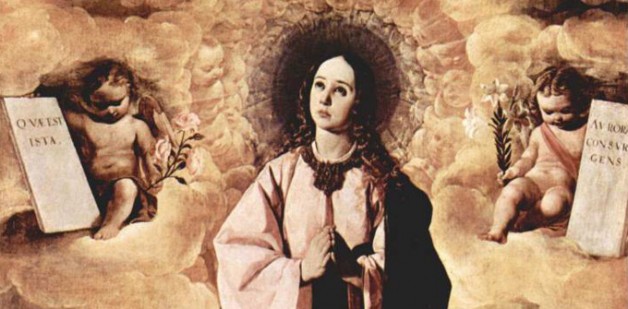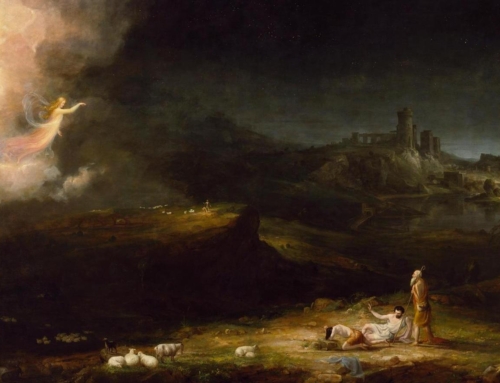“But how can someone be conceived without sin,” one of my non-Catholic friends asked me once after a class in college. “If God could make Mary be conceived without sin, then why didn’t He do this for everyone?”
The questions are valid ones. How could anyone be conceived without sin? The answer given by the teaching office of the Church is simple: only by sheer grace.
In the familiar Gospel passage from the first chapter of Luke, the angel Gabriel beholds Mary, and approaching her he says, “Hail full of grace! The Lord is with thee. Blessed art thou amongst women and blessed is the fruit of thy womb” (Lk. 1:28).
Commentaries on this passage often pick up on the fact that Mary is given a new name, coming from the Greek word charitoō, which means “to make graceful, lovely, and compassed with honor.” But commonly overlooked is the grammatical structure of the word in this verse of Scripture. In this passage the word is a participle; it is in the perfect passive and is rendered as kecharitōmenē. By its tense the word implies that she who is given this name had been previously graced by God. So a literal translation would be ‘Hail you-who-have-been-filled-with-grace! The Lord is with thee.’ St. Jerome in his Gospel commentary speaks about how grace had come to and filled Mary long before Gabriel arrives on the scene: ‘The Lord preceded His messenger’ Gabriel; for God, who ‘dwells in all places’, could neither be confined by time nor place in his preservation of Mary from sin.
But why would God work this way? What would compel God to treat Mary as the exception to mankind’s burden of the marks and effects of original sin? One answer is that God doesn’t leave anything undone. Gregory of Nyssa comments how Gabriel’s visit to Mary was the perfection and restoration of the ill effects of Satan’s encounter with Eve in Eden. In the garden, the effects of sin were brought upon the whole world. But at the start of Mary’s life, in her grace-filled conception in her mother’s womb, the world for the first time saw the white dawn that announced its own redemption by Christ. From the very moment of her conception, Mary was preserved from the stain of original sin precisely so that at the time of her encounter with God’s messenger, she could accept the role of being the Mother of God-Incarnate.
For how else could she say ‘yes’ to bearing the Son of God? By sheer grace Mary was conceived without sin, and by sheer grace did she merit to bear God’s Son. Let the nations rejoice with Gabriel, who cheerfully greeted Mary; for He who redeemed her from the moment of her conception has also redeemed the whole world.
Image: Francisco De Zurbaran, Our Lady of the Immaculate Conception







